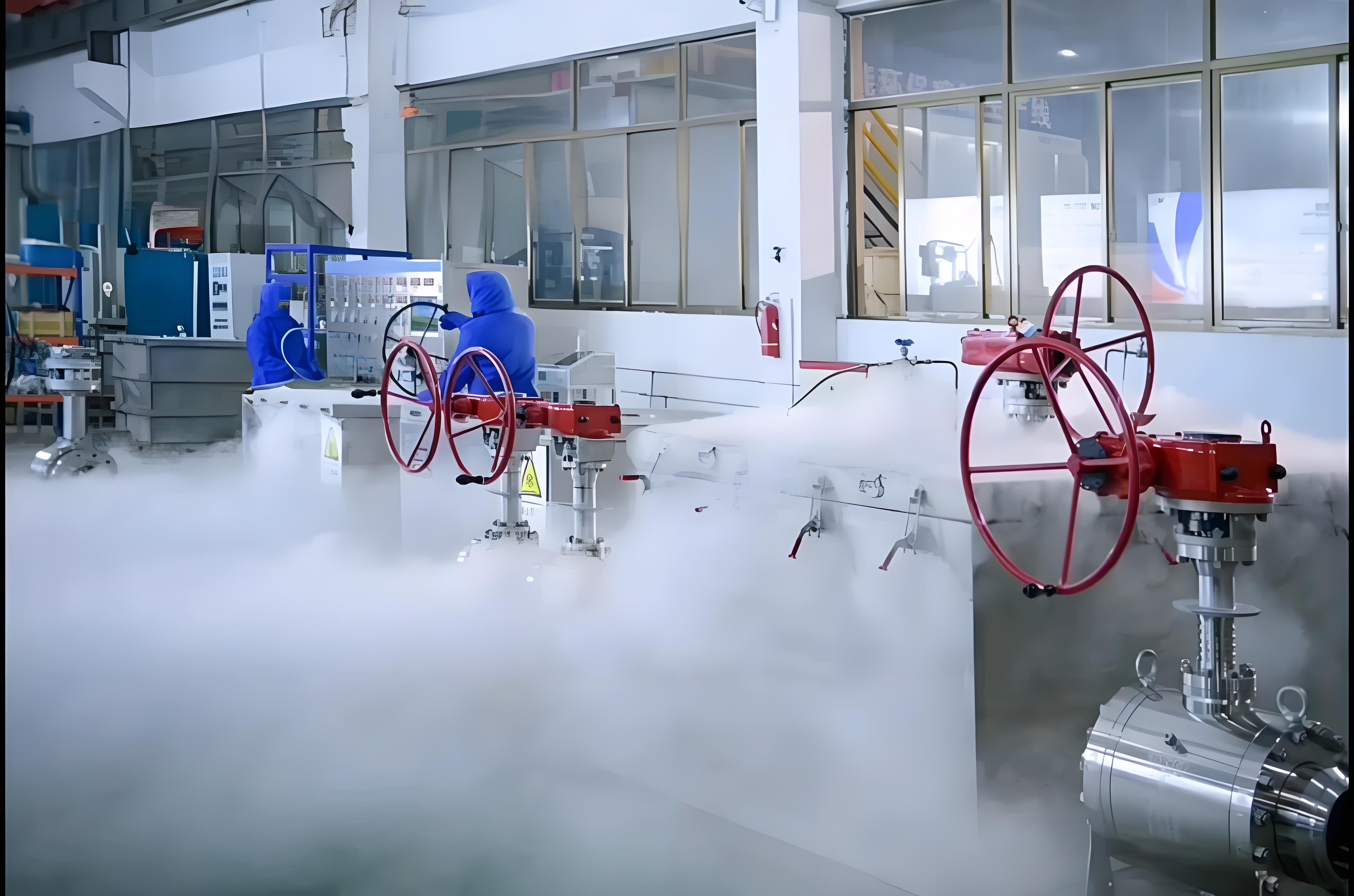
Cryogenic valves are essential in various industries, especially those with extremely low temperatures. They are designed to operate efficiently at temperatures below -150°C (-238°F), ensuring the safe and reliable control of cryogenic fluids.
Importance in Industry
Cryogenic valves are crucial in storing and transporting liquefied natural gas (LNG). LNG is stored at very low temperatures, often as low as -162°C. LNG’s highly flammable nature necessitates using valves that can safely handle these conditions. In addition to LNG, Cryogenic valves are employed in air separation plants., which manage very cold fluids like liquid nitrogen, oxygen, and helium. These plants are vital in various applications, including aerospace, medicine, and food processing.
Key Features
Cryogenic valves have several key features that enable them to function effectively in extreme conditions. These include:
- Material Selection: They are made from materials that can withstand extreme cold, such as stainless steel and special alloys. These materials ensure the durability and reliability of the valves.
- Extended Bonnet: The extended bonnet design keeps the valve’s stem and packing away from the cold fluid, preventing freezing and ensuring smooth operation.
- Leak Prevention: Cryogenic valves are designed to create a secure seal, preventing leaks that could result in safety hazards or product loss.
- Pressure Relief: Some cryogenic valves include pressure relief features to handle sudden pressure changes, which is crucial for maintaining safety and operational integrity.
Selection Criteria
Choosing the suitable cryogenic valve involves considering several factors:
- Temperature Range: Ensure the valve can operate effectively at the required temperatures.
- Pressure Rating: The valve must handle the pressure of the cryogenic fluid.
- Material Compatibility: Select a valve made from materials compatible with the cryogenic fluid.
- Type of Valve: Choose the appropriate type of valve based on the application’s specific needs.
- Manufacturer’s Reputation: Opt for reputable manufacturers known for quality and reliability. Ensure they offer a wide range of cryogenic valves to meet various needs.
Challenges and Solutions
Cryogenic valves face several challenges due to the extreme conditions they operate in. These challenges include:
- Sealing Issues: Non-metallic sealing components can become brittle at low temperatures, leading to potential leaks. Solutions include using metal and non-metal composite structures that maintain sealing integrity.
- Material Strength: Metals can become more robust and complex at low temperatures but may also become less plastic, leading to brittleness. Materials like austenitic stainless steel, which remains tough at low temperatures, can mitigate this issue.
Applications
Cryogenic valves are used in a variety of applications, including:
- LNG Storage and Transport: Ensuring the safe handling of liquefied natural gas.
- Air Separation Plants: Managing cold fluids like liquid nitrogen and oxygen.
- Aerospace: Supporting systems that operate at very low temperatures.
- Medical Applications: Handling cryogenic fluids used in various medical procedures.
- Food Processing: Controlling cryogenic fluids used in food preservation and processing.
Conclusion
Cryogenic valves are specialized components designed to operate under extremely low temperatures. They play a critical role in various industries, ensuring cryogenic fluids’ safe and efficient handling. When selecting cryogenic valves, it is essential to consider factors such as temperature range, pressure rating, material compatibility, and the type of valve required. By choosing high-quality valves from reputable manufacturers, you can ensure reliable performance and safety in your cryogenic applications.